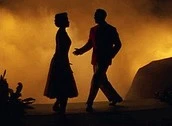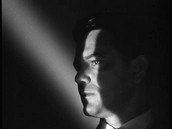This review, originally published in March of this year, is the thirty-first in the continuing Allan Fish Bonanza Encore series at Wonders in the Dark.
by Allan Fish
(UK 2013 108m) DVD1/2
The girl who fell to earth
p Nick Wechsler, James Wilson d Jonathan Glazer w Jonathan Glazer, Walter Campbell novel Michel Faber ph Daniel Landin ed Paul Watts m Mica Levi art Chris Oddy
Scarlett Johansson (Laura), Paul Brannigan (Andrew), Jessica Mance (alien), Krystof Hádek (swimmer), Scott Dymond, Michael Moreland,
After watching Under the Skin Mark Cousins tweeted “if movies hadn’t evolved out of other art forms, like the novel or theatre, what would they have looked like? Like Under the Skin.” Ne’er a truer word was tweeted, and yet it’s a statement that also gets to the heart of why the film was always going to be so divisive. Many film writers, critics and commentators and the vast majority of audiences are set in their ways. They like their films to have a linear narrative. They can jump forward and back in time, so long as they explain everything by the end credits. Under the Skin is a film that is happy to explain nothing. It revels in its ambiguity. To appreciate it one has to take a quantum leap, not to wonder what will happen next but to wonder what we will see next.
Ostensibly it’s about an alien in the disguise of a young woman, soullessly going round Glasgow and its surrounding environs in a white van picking up stray male passers -by and offering them a lift that will be their last. We are given some idea about what happens to them, but even that is left opaque. It’s primarily about her wanderings, and after a while she ditches the van and takes to foot and, as she does so, she grows ever more introspective, barely saying a word.
What it’s really about, though, is the breaking down of barriers, the shifting of parameters, in a way that borders on cinematic re-education. This is transcendent cinema of a type so rare as to make it seem like a solitary beacon shining out through a sea of sewage. Or a dim white dot, coming ever so slowly out of a black void, such as we see at the opening. It’s a bleak, brutal existence, with Johansson’s alien at first seeming like an angel of death but transforming, rather like the doomed replicants in Blade Runner, into something quite touching. The pick-ups may be doomed, but they experience a sort of nirvana, where the basic touchstones of reality as we know it are ripped apart and everything around them dissolves into a pool of black emptiness where they are seemingly left hanging like flies put aside by a spider to be eaten later.
Glazer’s singularity of vision owes something to Nicolas Roeg, naturally, but also to Kubrick, with individual shots recalling such diverse luminaries as Lav Diaz and even Roy Andersson. It’s splendidly shot in grimy hues by Daniel Landin and scored, if that’s the right word, by Mica Levi, in a way that recalls Jonny Greenwood’s work on There Will be Blood. Yet it’s the star that provides the soul and Johansson is extraordinary. Much has been said at her courage in taking on a role in which she’s not only divested of her clothes – don’t get excited, there’s nothing sexy about any scene in Under the Skin – but all the trappings of Hollywood fame. This is more than a mere performance; it’s a complete surrendering to a director’s vision. Glazer had been a decade waiting to get the film made and his star, too, had been in the doldrums. Reduced quite literally to the level of comic book sex icon, directors forgot to utilise her greatest attribute, the attribute that once spellbound us abandoned in Japan and reflected through Vermeer’s light plays; her uncanny sense of observance. (Without it she’d not have been able to walk about on the streets of Glasgow incognito during the shoot.) Forget the unanswered questions, revel in the visual and tonal texture, then briefly imagine cinema as it might have been. But before you get too optimistic, remember Glazer took ten years to get Under the Skinout in the world, while Johansson has three upcoming films playing Marvel’s Black Widow, like cinematic Hail Marys as penance for countenancing art. Be under no illusion who the real black widow is, though; it’s from this quite impossible film, emerging as if defying the laws of physics, from a black hole, before retreating into the matterless void.























 Click on names for archives
Writers/Founders
Click on names for archives
Writers/Founders
Leave a comment